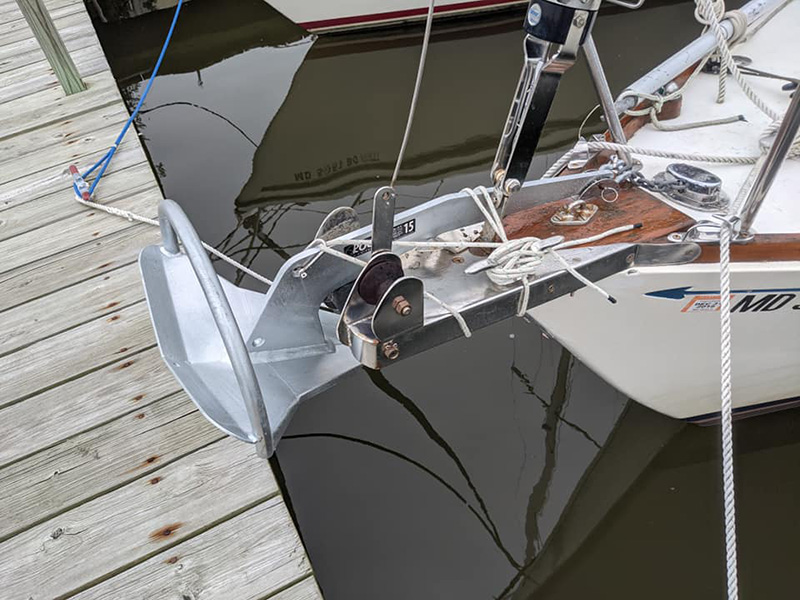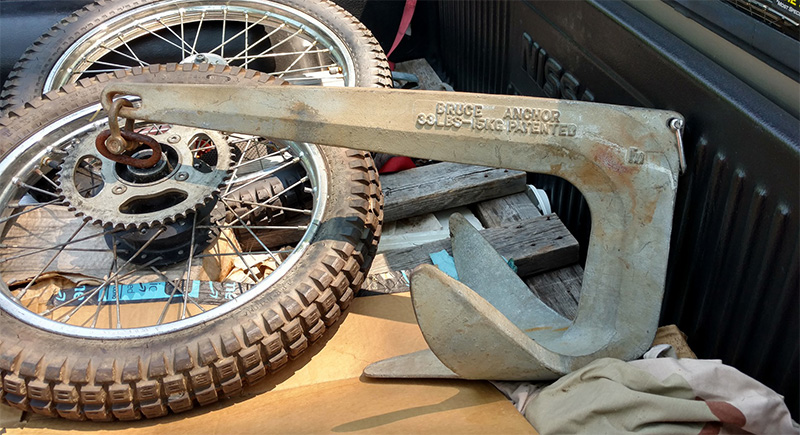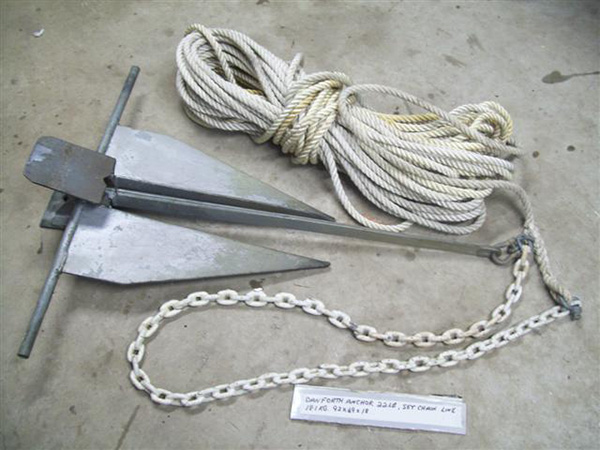Anchor selection (part 2 out of 3)
I spent fourth of July one year at an anchorage in Portsmouth, Virginia. I was anchored right next to a fireworks barge, with scores and scores of boats of all sizes anchored all around me. A random gust of wind blew, only at about twenty five knots. Instantly, about half of the boats started dragging. Some into other boats. Many pulled up their anchors and powered away. Really, no one should be dragging in twenty five knot winds, regardless of whether you have a small skiff, or a forty foot trawler, if you have the correct ground tackle and you use it correctly. Of course, at the heart of this, is the anchor itself.
There are hundreds of anchors out there. Not only are there a lot of different anchor types, they also come in different sizes, and they get used differently. Some are close to worthless. Others are good for almost anything. Some are one-trick ponies. The thing is, out of hundreds of anchor models out there, only a handful of them are great. And within these handful, each have their advantages and disadvantages. For the sake of keeping the discussion short, let us simply discuss some common, affordable anchors that work well.
Rocna / Mantus
These anchors are of spade type, with a roll bar hoop attached to the top to ensure the anchor falls properly on the seabed. The fluke is large and sharp, giving these anchors great holding power. These modern anchors have very good penetration abilities. When properly used, they will dig down into a variety of bottoms, including heavy mud, gravel, and grassy sand. As long as you can get that tip to start digging in, they will set. However, you really do have to set these anchors well to ensure they re-set if a tide shift substantially changes the direction of the pull. They may not provide really good holding power in very soft mud.

The Rocna anchor has a hole for tandem anchoring (more on this in the next article). The Mantus anchor can be broken apart for easier storage. I recommend either of these anchors as your primary, do-it-all anchor. I personally lean towards the Rocna, due to the tandem anchoring ability.
Some bow rollers cannot hold an assembled Mantus or a Rocna anchor. And the roll bar can contribute to fouling of the anchor, either by foreign objects or your own anchor rode.
Claw anchor
This design was originally designed for offshore oil platforms. Huge, house-sized anchors would hold these rigs in place. Their ‘miniature’ counterparts are what we would be using. If you can get your hands on a genuine Bruce, which has been out of production for some decades now, I highly recommend it. The difference between a copy (such as the Lewmar claw) and the real-deal is night and day. Claw anchors are known for their versatility, and their ability to reset.
If one of the three prongs of the ‘claws’ catch the sea bed, even if the anchor is lying sideways, this anchor set. On moderately heavy mud, you can almost drop it and forget about it because they set themselves so easily. They’ll also grab onto a piece of rock sticking out quite well, which the Rocna and Mantus have trouble doing. However, they do not penetrate deep into the seabed as the pulling forces increase. After a certain set, they’ll start to drag. This means that the ultimate holding power of these anchors on softer mud and sand are limited.

I carry a genuine Bruce anchor as my secondary, and have used it as a primary anchor in the past. Both my zodiac tender and my Boston Whaler uses a much smaller Lewmar copy as their primary anchors. It works quite well in the Chesapeake bay, and it works ‘good’ in the Potomac River, which sometimes has a softer mud bottom than the bay. I’ve successfully used it as a tandem anchor to my Rocna as well. If you can get your hands on a used, genuine Bruce anchor, you could use one as a primary. If you do a lot of long trips, I’d use the Rocna or Mantus as the primary and keep this as the secondary.
Fluke anchor
This kind of design, also known as a ‘Danforth-style’ anchor, are very common and tend to be the most likely to be found on a small boat. For a good reason too. For their weight, they have the most holding power. A good fluke anchor in a soft bottom will dig deeper and deeper as the forces increase. They also fold down to a flat shape, making it easier to store. You can even hang them on the pushpit, pulpit or another piece of rail.
Unfortunately, the fluke anchor does not reset at all. It also does not penetrate grassy bottoms or other hard-packed bottoms. This makes this anchor, in my opinion, unsuitable as a ‘do-it-all’ anchor, but it is very useful specific situations.
Out of all the manufacturers of this style anchor, I recommend a genuine Danforth or a Fortress anchor. Many experienced cruisers will carry one of the two as an emergency storm anchor.

Other anchors
I heard some good things about some of the ‘brand new’ and very expensive anchors from reputable, experienced people. Ultra and Manson Supreme are one of these examples. However, I have no experience with them, and some of these anchors have not been in the market long enough to really have proven themselves. There are also modern, but pre-generation era of anchors, such as the CQR and Delta. These may be ‘good’ in a lot of conditions, but the newer anchors such as the Rocna and Mantus really outperform them all.
How many anchors should we carry? Is one anchor enough? A truly sea-dwelling, liveaboard cruisers who love on the hook full time carry over four anchors on their boat. And that is indeed wise. Unfortunately, many of us do not have enough space for that many anchors. I think two is a good compromise for anything from a day boater to a coastal cruiser. One primary to be used 95% of the time, and a secondary backup that is a bit more specialized for a different bottom, or in case the primary is lost. You could also use it when you want to have two anchors out.
For sizing, bigger is better, up to a point. I’m a huge believer in using oversized, overkill equipment unless that weight is going aloft and affects the boat’s stability. However, this type of thinking needs to be checked. An anchor that is too big will not be able to be properly set with a smaller boat, and of course, retrieving the anchor will be more difficult too. Here is my recommendation. Go one size up from the recommended anchor size for your boat. Boat sizes are given in a range of displacement or length for a given anchor size. If your boat falls in the lower end of the given range, don’t go up a size.
I would gladly pay a bit extra for my peace of mind. Keep in mind that you are paying for the 1% of the time you need your anchor to perform. Even if the 99% of the time, it’ll be ‘fine,’ it only takes that one storm to endanger your vessel, crew, and other boats around you.
One note: I have no affiliation whatsoever with any of the brands mentioned above. I paid for every anchor I used (though, its quite possible to salvage some free anchors from any given popular anchorage). Next, we will talk about setting and retrieving the anchor.
-Captain Jerry
Reflections DC boat cruises